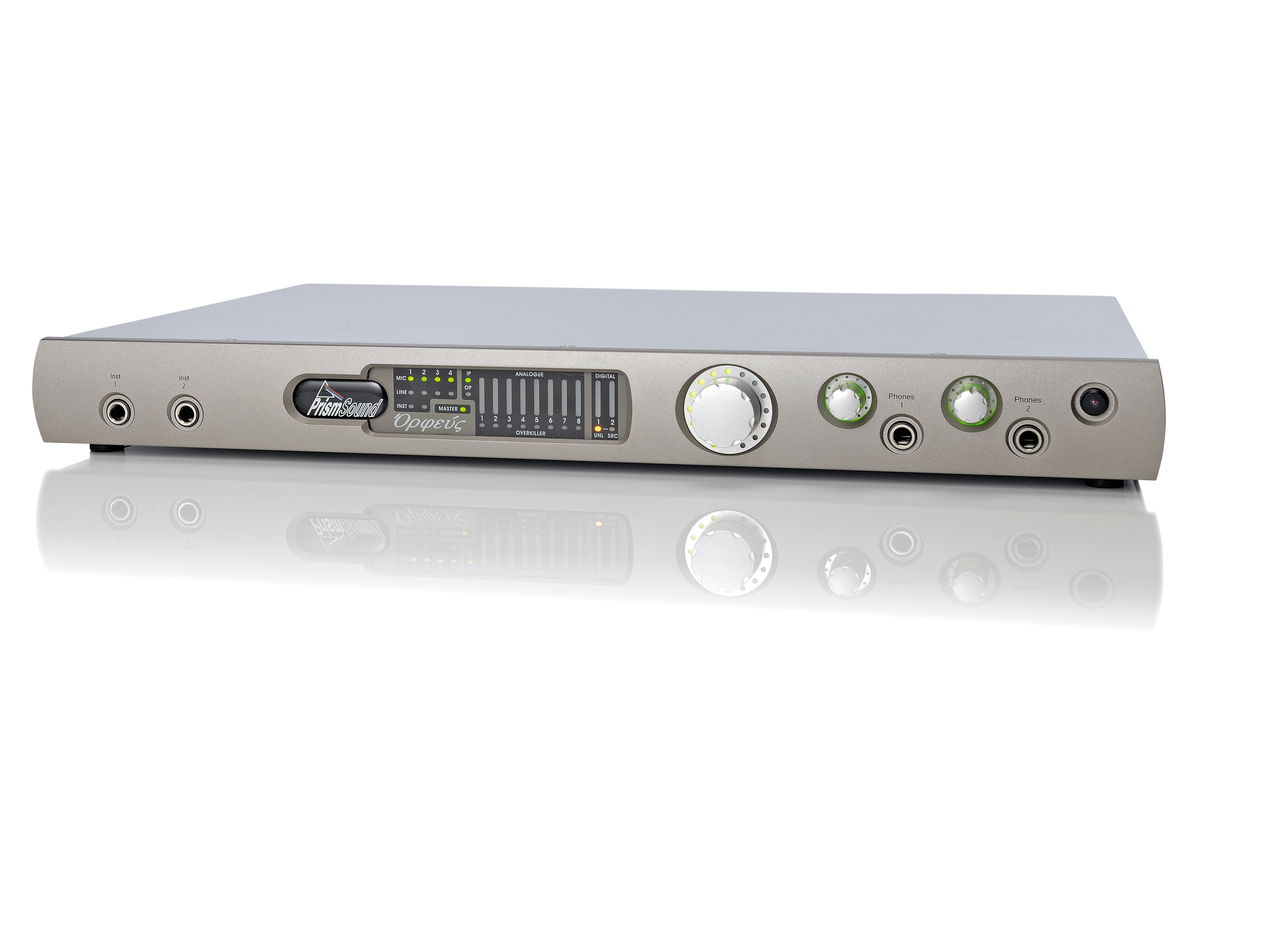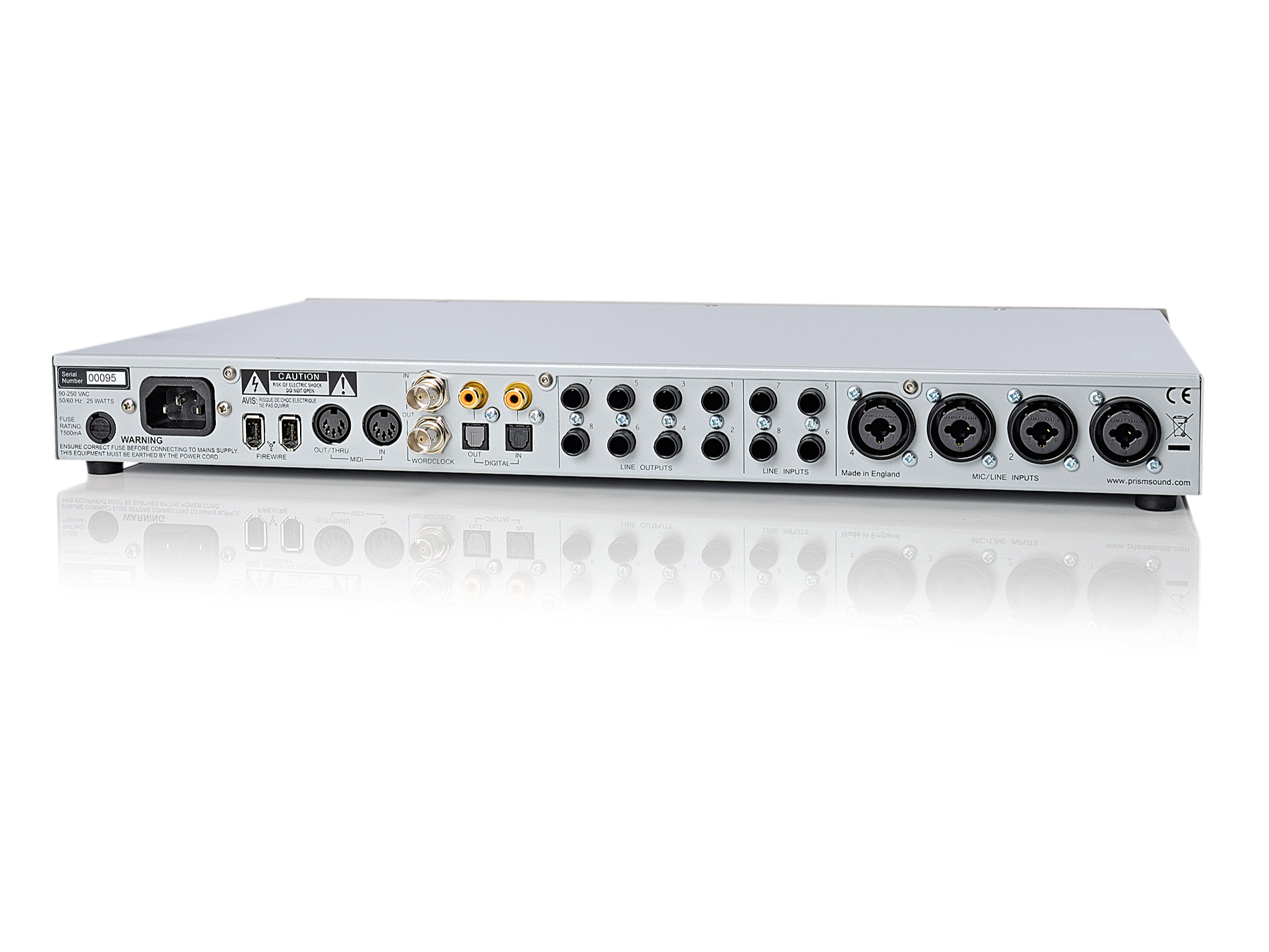MusicRadar Verdict
Prism Sound has raised the quality bar with this high-end FireWire audio interface.
Pros
- +
Effortless sound. Flexible connectivity. Smooth software integration.
Cons
- -
No insert points on the mic inputs. No automatic muting. You can only have one headphone mix.
MusicRadar's got your back

Prism Sound Orpheus

Prism Sound Orpheus
Many FireWire interfaces combine conversion, mic pres and also some form of software driven low-latency monitoring, and this is true of the Orpheus.
At the most basic level it offers 18 streams of I/O (eight analogue, eight ADAT and two S/PDIF) and MIDI, with four mic pres, two instrument inputs and two headphone outs.
However, this typical spec doesn't really portray the quality or flexibility of the unit. With conversion that's based on Prism Sound's other units, a new mic pre design, state-of-the-art 'CleverClox' clocking, and carefully engineered balanced audio paths to minimise hum and noise, the emphasis is clearly on the high-end.
But possibly the most significant aspect of Orpheus is its software control system. Pretty much every aspect of the unit is configurable from here, including mic pre options (and mic gain) and software monitoring, and this explains why the front-panel is so sparse.
The back panel, on the other hand, is anything but. The first four inputs (which are the ones that include mic pres) are on combi XLR/ TRS connectors. All other analogue connections are on TRS jacks. Digital connectors include optical (for both ADAT and S/PDIF) and coax (which can handle both AES and S/PDIF). Surprisingly, there are no insert points on the mic inputs.
In addition to the basics, Orpheus has a number of extras including real-time sample rate conversion on the S/PDIF ins and outs, individual phase reverse, low cut and phantom power on the mic inputs, real-time M/S stereo decoding on the mic inputs, and various clocking options.
You can even run it in ADAT Direct mode as a standalone 2-way ADAT signal converter, and it's also nice to see individual limiters (called overkillers) on all inputs.
Want all the hottest music and gear news, reviews, deals, features and more, direct to your inbox? Sign up here.
If this all sounds a bit complex, rest assured that the front-panel display is compact but informative, and by the careful use of multi-coloured indicators, shows an enormous amount of information.
In use
Out of the box the Orpheus feels very well made. It's important that a unit not only sounds good but also feels stable and responsive.
In use, the Orpheus software is as good as any we've tried, with responsive buttons and faders and corresponding feedback from the front-panel display.
One rather nice feature is the option to assign the front-panel knob to any number of the output levels. This would be great for controlling multiple surround monitoring feeds, and in a stereo setup enables you to assign control of your monitor output
while your main outs remain untouched.
The knob also has a push-button action (yet to be implemented). I think this would make a perfect overall or assignable mute option.
While we're on the subject of muting, it's also worth noting that the Orpheus seems to have no automatic muting. Maybe you wouldn't expect this when shutting down (although that would be nice), but because it reboots when you change certain settings in its software, this would be a welcome 'monitor protecting' addition.
Performance and sound
Sonically, it's very difficult to fault the Orpheus. Anyone familiar with the company's mic pres and converters will know that colouration isn't really its thing, and the same is very true of this box. When we say that you're unaware that it's there, we mean it as a compliment.
This extends to control of mic levels and outputs with behaviour akin to the better digital desks, and even though you're making level adjustments in software, there's no evidence of the zipper noise you get with cheaper gear.
While we're on the subject of software, you can set up outputs to follow your audio application direct (DAW), or set up individual mixes for each output pair using the software mixer. This is simple enough, enabling you to combine analogue and S/PDIF inputs with your DAW source.
What it won't let you do is factor in the ADAT connections (should you be using them). We're also a little surprised that the twin headphone outs are sourced from the same headphone sub mix, so you can only have one headphone mix.
Summary
The Orpheus is a serious piece of kit that delivers excellent quality precisely where you would expect - mic pres and conversion - but packs in all sorts of other useful pro-level features.
For all its capabilities, though, we're a bit surprised that there are no insert points or more flexibility in the headphone department, and it must be said that some of the cheaper quality interfaces offer more flexible software mixing.
However, in use, the Orpheus is extremely stable and sounds fantastic, and possibly sets a new state-of-the-art benchmark for the FireWire audio interface.
Liked this? Now read: The 11 plug-ins you can't live without and The 11 best DAW software apps
Future Music is the number one magazine for today's producers. Packed with technique and technology we'll help you make great new music. All-access artist interviews, in-depth gear reviews, essential production tutorials and much more. Every marvellous monthly edition features reliable reviews of the latest and greatest hardware and software technology and techniques, unparalleled advice, in-depth interviews, sensational free samples and so much more to improve the experience and outcome of your music-making.
